POLYMYXIN B/TRIMETHOPRIM - OPHTHALMIC
PHONETIC PRONUNCIATION: (paw-lee-MIX-in B SUL-fate/try-METH-oh-prim)
COMMON BRAND NAME(S): Polytrim
GENERIC NAME(S): polymyxin B sulfate/trimethoprim
Uses
USES: This medication is used to treat bacterial infections (such as blepharitis, conjunctivitis) of the eye. It contains 2 antibiotics. Polymyxin B works by killing the bacteria. Trimethoprim works by stopping the growth of the bacteria. This medication treats only bacterial eye infections. It will not work for other types of eye infections. Unnecessary use or misuse of any antibiotic can lead to its decreased effectiveness.
How to use POLYMYXIN B/TRIMETHOPRIM - OPHTHALMIC
HOW TO USE: To apply eye drops, wash your hands first. To avoid contamination, do not touch the dropper tip or let it touch your eye or any other surface. Use in the eyes only. Do not swallow or inject. Do not wear contact lenses while you are using this medication. Sterilize contact lenses according to the manufacturer's directions, and check with your doctor before you begin using them again. Tilt your head back, look upward, and pull down the lower eyelid to make a pouch. Hold the dropper directly over your eye and place one drop into the pouch as directed by your doctor. Look downward, gently close your eyes, and place one finger at the corner of your eye (near the nose). Apply gentle pressure for 1 to 2 minutes before opening your eyes. This will prevent the medication from draining out. Try not to blink or rub your eye. Repeat these steps if your dose is for more than one drop. If directed to use this medication in both eyes, repeat these steps for your other eye. Wait several minutes for your vision to clear before driving or operating machinery. Do not rinse the dropper. Replace the dropper cap after each use. Dosage is based on your medical condition and response to treatment. Your doctor may direct you to use this medication more often at first, then use it less frequently as the infection improves. Follow your doctor's directions carefully. Tell your doctor if you are using other eye products (such as drops, ointments, artificial tears). Some ingredients in these products may interact with this medication and prevent it from working. Ask your doctor or pharmacist if you can use these eye products while using this medication and how long to wait before applying the other products. Use eye drops before eye ointments to allow the drops to enter the eye. Use this medication regularly in order to get the most benefit from it. To help you remember, use it at the same times each day. Continue using it for the full time prescribed, usually 7 to 10 days. Stopping the medication too soon may allow the bacteria to continue to grow, which may result in a return of the infection. Tell your doctor if your condition persists or worsens.
Side Effects
Precautions
Interactions
Overdose
Images
Reviews
Faq for POLYMYXIN B/TRIMETHOPRIM - OPHTHALMIC
Polymyxin B/Trimethoprim ophthalmic solution consists of two antibiotics: polymyxin B and trimethoprim. Polymyxin B is effective against certain types of bacteria, while trimethoprim inhibits the growth of bacteria by blocking the production of essential proteins. Together, these antibiotics work synergistically to treat bacterial eye infections.
Polymyxin B/Trimethoprim ophthalmic solution is used to treat bacterial eye infections, such as conjunctivitis (pink eye) and blepharitis (inflammation of the eyelids). It is not effective against viral or fungal eye infections.
Wash your hands before using the eye drops. Tilt your head back slightly and pull down your lower eyelid to create a small pocket. Hold the dropper directly above the eye and squeeze out the prescribed number of drops. Close your eyes gently and apply pressure to the inner corner of your eye for a minute to prevent the medication from draining into your tear duct. Repeat these steps for the other eye if required. Avoid touching the dropper tip to any surface to prevent contamination.
Common side effects of this medication include temporary burning or stinging sensation in the eyes, temporary blurred vision, itching, redness, or irritation of the eyes. If any severe allergic reactions occur, such as rash, itching, swelling, severe dizziness, or trouble breathing, seek immediate medical attention.
It is generally recommended to remove contact lenses before using Polymyxin B/Trimethoprim ophthalmic solution. You may re-insert your contact lenses 15 minutes after applying the eye drops. However, it is always advisable to consult your eye care professional or read the product information for specific instructions.
The duration of treatment may vary depending on the severity of the infection. Improvement in symptoms is usually observed within a few days. It is important to complete the full course of treatment as prescribed by your healthcare provider, even if the symptoms improve before completion.
Disclaimer
IMPORTANT: HOW TO USE THIS INFORMATION: This is a summary and does NOT have all possible information about this product. This information does not assure that this product is safe, effective, or appropriate for you. This information is not individual medical advice and does not substitute for the advice of your health care professional. Always ask your health care professional for complete information about this product and your specific health needs.
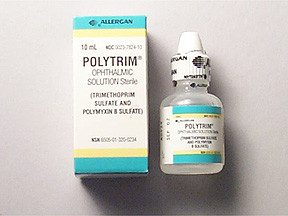
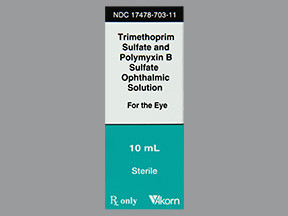
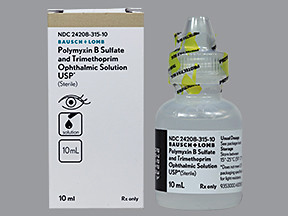
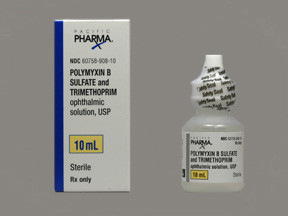
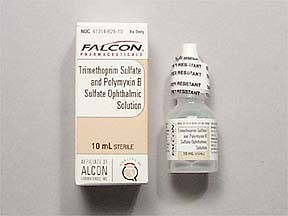
No Reviews Yet